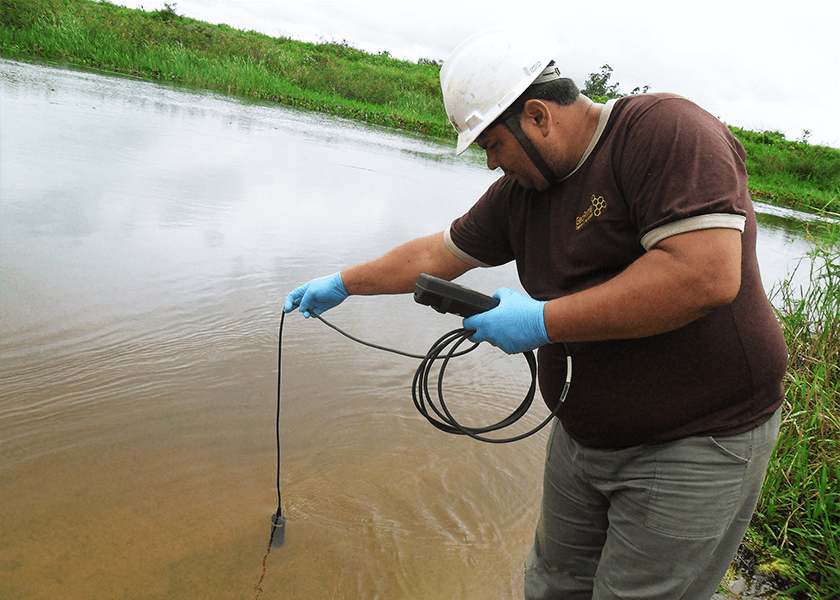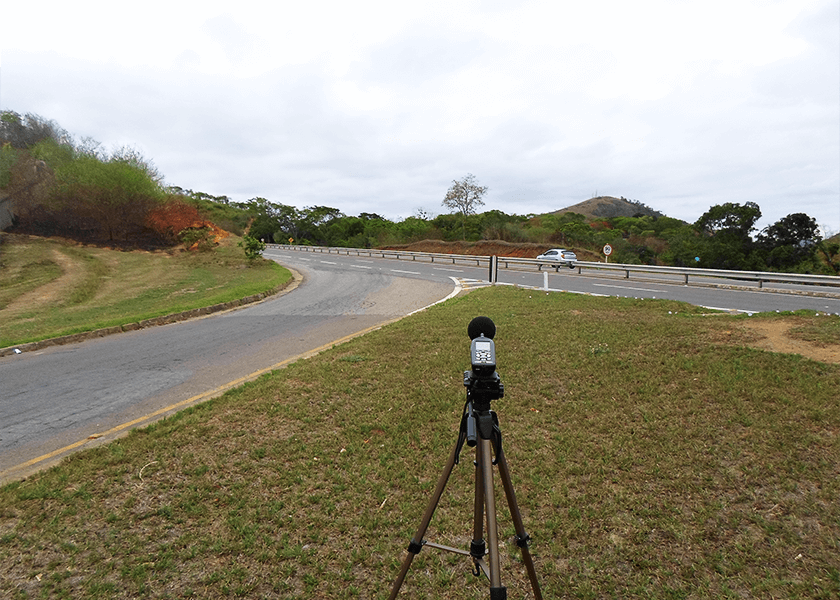Environmental monitoring is a data collection process – a continuous and periodic study of environmental parameters used to identify, assess, measure, and monitor conditions that may influence natural resources. It serves as the basis for action planning to address potential risk situations.
At Geoprime we are well equipped to perform collection and sampling of diverse type of material such as industrial effluents, surface or ground water by using low-flow methodology, environmental noise measurements, air quality monitoring by using High Volume Sampling (Hi-vol), and much more.

This type of sampling permits representative collection of gas and particulate matter flow emitted by ducts and chimneys. This sampling is an important verification tool of air pollution, becoming a framework for legal emission standards established by environmental standards.
Collection of industrial effluents is realized with appropriate procedures and for handling, transport, and delivery of samples to certified laboratories for conducting microbiological and chemical analysis.
Surface water collection is accomplished with appropriate procedures for handling, transport, and delivery of samples to accredited laboratories for performing microbiological and chemical analysis.
Groundwater collection is achieved through representative sampling of the aquifer, by measuring field parameters, thereby reducing the loss of incorporated compost, as recommended per ABNT NBR 15847/10, with appropriate procedures and for the handling, transport, and delivery of samples to certified laboratories for conducting microbiological and chemical analysis.
Air quality monitoring quantifies the level of air pollutants in the environment, as well as an assessment of air quality with respect to the limits established by National Environment Council (CONAMA 003/90). The ultimate goal is to keep the air quality within the appropriate pollution levels.
Dismantling of rocks using explosives in urban areas generates undesirable effects from noise and ground vibration, which can cause discomfort to the surrounding people and damage to nearby structures. The control and minimization of these effects are understood by seismographic monitoring in conjunction with planning and execution of rock blasting work activities (NBR 9653: 2005).
Constructions of all kinds (pile driver, road roller, perforations, demolitions and implosions, etc.), can cause undesirable effects of noise and vibrations in the soil which can cause discomfort to the surrounding people and damage to nearby structures. The control and minimization of these effects are understood by seismographic monitoring in conjunction with planning and execution of construction activities (NBR 9653: 2005).
Vegetation characteristics of an area are recorded by surveying the site, noting the qualitative characteristics related to plant community and their population. From this information the vegetation is classified as introduced, spontaneous or remnant. Additionally, basic observations of the substrate are made, in order to characterize its ability to provide for the development of specific vegetation, as well as instances of environmental restoration activities in the area.
